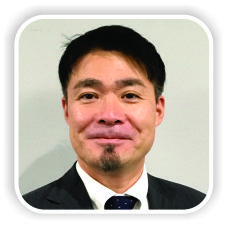 [box type=”bio”] Learning Point of the Article: [/box]
[box type=”bio”] Learning Point of the Article: [/box]
Since the neuroparalysis was incomplete and began to recover within a few days, the pathology of this isolated Musculocutaneous nerve Injury was considered incomplete axonotmesis, which was successfully treated conservatively.
Case Report | Volume 11 | Issue 3 | JOCR March 2021 | Page 113-116 | Takeshi Kataoka, Takeshi Kokubu, Yutaka Mifune, Atsuyuki Inui, Tetsuya Yamazaki, Ryosuke Kuroda . DOI: 10.13107/jocr.2021.v11.i03.2112
Authors: Takeshi Kataoka[1], Takeshi Kokubu[2], Yutaka Mifune[1], Atsuyuki Inui[1], Tetsuya Yamazaki[3], Ryosuke Kuroda[1]
[1]Department of Orthopaedic Surgery, Kobe University Graduate School of Medicine, Kobe, Hyogo, Japan,
[2]Department of Orthopaedic Surgery, Shin-suma General Hospital, Suma-ku, Kobe, Hyogo, Japan,
[3]Department of Orthopaedic Surgery, Yokohama Minami Kyosai Hospital, Yokohama, Kanagawa, Japan.
Address of Correspondence:
Dr. Takeshi Kataoka,
7-5-2, Kusunoki-cho, Chuo-ku, Kobe, Hyogo, 650-0017, Japan.
E-mail: t.kataoka1010@gmail.com
Abstract
Introduction: Musculocutaneous nerve lesion in a throwing athlete is a rare condition. We report the case of a professional baseball pitcher with an isolated musculocutaneous nerve lesion that occurred during a pitching motion.
Case Presentation: The patient had radiating pain in the upper arm and weakness of elbow flexion. Physical examination revealed flaccid paralysis of the biceps brachii muscle and paresthesia in the right lateral forearm. Musculocutaneous nerve injury was suspected. Because some signs of recovery were observed within a few days, the patient received non-operative management. Nerve conduction studies at 2 weeks after the injury showed low-amplitude compound muscle action potential of the right biceps brachii muscle by stimulation of the musculocutaneous nerve. Needle electromyography showed markedly reduced motor unit potential recruitment in the biceps brachii muscle. He was diagnosed as having isolated musculocutaneous nerve injury. At 2 months after the injury, the muscle contraction and strength of the biceps brachii muscle improved. At 7 months after the injury, muscle weakness was fully recovered. His pitching ability returned to that of a competitive player.
Conclusion: Because the neuroparalysis was incomplete and began to recover within a few days, we considered the pathology of this injury to be incomplete axonotmesis, which was successfully treated conservatively.
Keywords: Isolated musculocutaneous nerve injury, baseball pitcher, axonotmesis.
Introduction
The musculocutaneous nerve branches from the lateral cord of the brachial plexus and then pierces the coracobrachialis muscle and runs between the brachialis and biceps brachii muscles [1]. The terminal branch of the musculocutaneous nerve is the lateral antebrachial cutaneous nerve (LACN), which innervates the sensation of the lateral forearm [2]. Isolated musculocutaneous nerve lesions are rare [3]. Typical complaints include painless weakness during elbow flexion and numbness or paresthesias in the distal lateral forearm [3]. We report the case of a 31-year-old professional baseball pitcher with an isolated musculocutaneous nerve injury that occurred during a pitching motion.
Case Presentation
A 31-year-old right-handed professional baseball pitcher felt a radiating pain from the upper arm to his fingertips while throwing at a preseason game. He could not continue throwing because of the pain and visited our hospital. He also felt weakness during elbow flexion. On physical examination, flaccid paralysis of the right biceps brachii muscle (Fig. 1) and paresthesia in the right lateral forearm were observed. 

Discussion
The musculocutaneous nerve originates from the upper and middle trunks of the brachial plexus (C5, C6, and sometimes C7), then pierces the coracobrachialis muscle, and runs between the brachialis and biceps brachii muscles. The motor branches supply the coracobrachialis, biceps brachii, and brachialis muscles. The terminal branch of the musculocutaneous nerve is the LACN, which innervates the lateral forearm [2]. Musculocutaneous nerve lesions are often accompanied by other nerve disorders, such as disorders of the axillary nerve, brachial plexus, and suprascapular nerve, after a shoulder dislocation or fracture of the clavicle [2]. On the other hand, a few cases of isolated musculocutaneous nerve injury have been reported in association with sports activities, such as softball [4] or baseball pitching [5, 6], kickboxing [7], weight lifting [8], and skydiving [9]. It has been reported that musculocutaneous nerve injury occurred distal to the innervations of the coracobrachialis at the level where the musculocutaneous nerve enters the biceps muscle [4]. Violent extension of the elbow and repeated biceps flexion can cause traction of the nerve. Furthermore, muscle hypertrophy and contraction may reportedly disturb blood supply and nerve function [4]. In the present case, we assumed that the shoulder was abducted and externally rotated, which caused a stretch injury of the musculocutaneous nerve at the point where it pierces the coracobrachialis muscle during the pitching motion. Several other disorders can be considered in the differential diagnosis. Radiculopathy at C5 and C6 could cause pain and denervation of the biceps but would typically involve other muscles, such as the serratus anterior, pectoralis major, and deltoid muscles. In addition, MRI of the cervical spine should be abnormal in radiculopathy. Brachial plexopathy will cause biceps weakness and paresthesia in the forearm, but it typically includes a more extensive sensory disturbance in the upper extremity and muscle weakness clinically and electrophysiologically compared with isolated musculocutaneous nerve injury [6]. Biceps tendon rupture causes acute pain and weakness during elbow flexion. However, paresthesia in the forearm will be absent, and denervation in the electrophysiological examination of the biceps should be normal. Patients in previous reports were treated conservatively with rest, anti-inflammatory medications, and physical therapy. Those patients achieved full recovery of motor function and returned to their pre-injury level of activity without any problems within 1 year [4, 5, 6, 7, 8, 9]. A few cases have reportedly required surgical intervention. A case of musculocutaneous nerve injury that occurred after a vigorous push has been reported. In this case, conservative treatment including multiple corticosteroid injections for 3 months was not effective, and surgical release was finally required [10]. Nerve injuries were classified into neuropraxia, axonotmesis, and neurotmesis by Seddon [11]. Neuropraxia is caused by compression or stretching. Recovery of neuropraxia is expected within days or weeks. Neurotmesis is the most severe type of injury and results in complete disruption of the nerve. Neurotmesis requires nerve repair or nerve transfer. In axonotmesis, the axon is affected and Wallerian degeneration occurs distal to the injury site [12]. After an axonotmesis injury, there is an initial delay of a few days to several months for the regenerating axons to cross the lesion site. Axons traverse to the distal segment at a rate of 1 mm/day in the arm. Several months are typically required for clinical recovery after an axonotmesis injury, and full recovery is expected [13, 14]. The onset of the recovery of musculocutaneous nerve injuries reportedly ranges from 2 to 9 months [4, 5, 6, 7, 8, 9]. In these cases, the musculocutaneous nerve injury was expected to be axonotmesis. In our case, because the neuroparalysis was incomplete and some signs of recovery were observed within a few weeks, we considered the pathology of this injury to be incomplete axonotmesis, which was treated conservatively.
Conclusion
We reported the case of a 31-year-old professional baseball pitcher with an isolated musculocutaneous nerve injury that occurred during a pitching motion. Because the neuroparalysis was incomplete and began to recover within a few days, we considered the pathology of this injury to be incomplete axonotmesis, which was successfully treated conservatively.
Clinical Message
Musculocutaneous nerve lesion in a throwing athlete is a rare condition. In general, the musculocutaneous nerve injury is considered to be axonotmesis. Several months are typically required for clinical recovery after an axonotmesis injury, and full recovery is expected.
References
1. Shinyoung KE, Han EY, Min K, Im SH. Isolated musculocutaneous nerve injury following a pedestrian-automobile collision: A case report. Neurol Asia 2019;24:267-70.
2. Inaba A, Yokota T. Isolated musculocutaneous nerve palsy during sleep. Muscle Nerve 2003;28:773-4.
3. Kissel JA, Leonardelli C. Isolated musculocutaneous neuropathy: A case report. J Can Chiropr Assoc 2019;63:162-70.
4. DeFranco MJ, Schickendantz MS. Isolated musculocutaneous nerve injury in a professional fast-pitch softball player: A case report. Am J Sports Med 2008;36:1821-3.
5. Hsu JC, Paletta GA Jr., Gambardella RA, Jobe FW. Musculocutaneous nerve injury in major league baseball pitchers: A report of 2 cases. Am J Sports Med 2007;35:1003-6.
6. Henry D, Bonthius DJ. Isolated musculocutaneous neuropathy in an adolescent baseball pitcher. J Child Neurol 2011;26:1567-70.
7. Zanette G, Lauriola MF, Picelli A, Tamburin S. Isolated musculocutaneous nerve injury in a kickboxer. Muscle Nerve 2015;52:1137-9.
8. Bird SJ, Brown MJ. Acute focal neuropathy in male weight lifters. Muscle Nerve 1996;19:897-9.
9. Mautner K, Keel JC. Musculocutaneous nerve injury after simulated freefall in a vertical wind-tunnel: A case report. Arch Phys Med Rehabil 2007;88:391-3.
10. Yilmaz C, Eskandari MM, Colak M. Traumatic musculocutaneous neuropathy: A case report. Arch Orthop Trauma Surg 2005;125:414-6.
11. Seddon HJ. Peripheral nerve injuries. In: Medical Research Council Special Report Series No. 282. London: Her Majesty’s Stationery Office; 1954.
12. Griffin MF, Malahias M, Hindocha S, Khan WS. Peripheral nerve injury: Principles for repair and regeneration. Open Orthop J 2014;8:199-203.
13. Kuhlman KA, Batley RJ. Bilateral musculocutaneous nerve palsy. A case report. Am J Phys Med Rehabil 1996;75:227-31.
14. Sunderland S. Rate of regeneration in human peripheral nerves; analysis of the interval between injury and onset of recovery. Arch Neurol Psychiatry 1947;58:251-95.
 |
 |
 |
 |
 |
 |
| Dr. Takeshi Kataoka | Dr. Takeshi Kokubu | Dr. Yutaka Mifune |
Dr. Atsuyuki Inui | Dr. Tetsuya Yamazaki | Dr. Ryosuke Kuroda |
| How to Cite This Article: Kataoka T, Kokubu T, Mifune Y, Inui A, Yamazaki T, Kuroda R. Isolated Musculocutaneous Nerve Injury in a Professional Baseball Player: A Case Report. Journal of Orthopaedic Case Reports 2021 March;11(3): 113-116. |
[Full Text HTML] [Full Text PDF] [XML]
[rate_this_page]
Dear Reader, We are very excited about New Features in JOCR. Please do let us know what you think by Clicking on the Sliding “Feedback Form” button on the <<< left of the page or sending a mail to us at editor.jocr@gmail.com

 [box type=”bio”] Learning Point of the Article: [/box]
[box type=”bio”] Learning Point of the Article: [/box]



